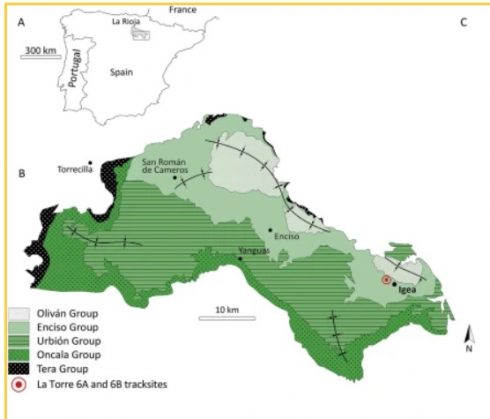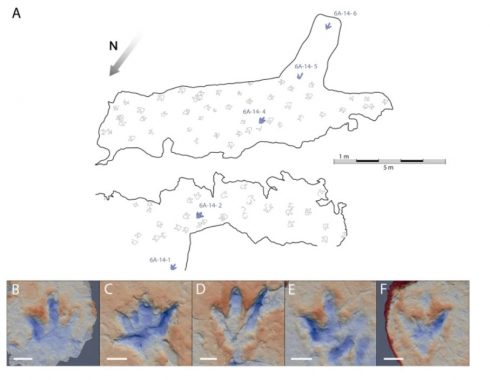PALEONTOLOGISTS studying a series of fossilized footsteps unearthed in Spain’s La Rioja have discovered more about a meat-eating dinosaur that was pretty fast on its feet.
Studying the distance between the footsteps in two trackways dating from the Cretaceous Period about 120 million years ago have revealed just how fast the medium sized carnivore was that left them.
According to the latest research, these particular dinosaurs could run about 28 miles per hour (45km/ph) – about the same speed as world record breaking human sprinter Usain Bolt.
The speed was calculated by estimating the stride length on two trackways where one indicated a gradual increase in pace and the other suggested the animal maneuvered as it ran, perhaps because it was being pursued by a predator.
“Their capacity to run very quickly and their maneuvering abilities surely allowed them to chase prey very efficiently,” said Pablo Navarro-Lorbes, a paleontology doctoral student at Universidad de La Rioja in Spain and lead author of the research published in the journal Scientific Reports. “And of course I wouldn’t like to be caught by this guy on a riverbank,” he added.

The footprints belonged to a species of theropod, three-toed meat-eaters that include the Tyrannosaurus Rex. However, these footsteps belong to a much smaller species thought to be either spinosaurs of carcharodontosaurs which were about two metres tall and weighed between 200 and 300kg.

Study co-author Angelica Torices, a paleontologist at Universidad de Rioja said speed helped not only in hunting but in fleeing danger including “bigger theropods that could see them as their prey.”
Tyrannosaurus Rex for example could exceed 12 metres in length and stand over 5metres tall.
“There are several factors that dictate the running ability of a dinosaur,” explained Navarro-Lorbes.
“Some paleontologists think that theropods with sizes between 100 and 1,000 kilograms could have been some of the best dinosaur runners because of the relationship between their weight and muscular performance.”
READ ALSO:
- JURASSIC PARK: New species of dinosaur discovered in Spain’s Castellon
- Paleontologists extract a nest with at least 12 dinosaur eggs in Spain
- Over 200 fossilised footprints of animals predating dinosaurs described in Spain’s Catalunya
Click here to read more Other News from The Olive Press.








